-
Catalogue of products
-
- Sale
-
Silver jewellery
-
All in the category Silver jewellery
- Pendants
- Bracelets
- Rings
- Earrings
- Moldavites, czech
- Necklaces
- Golden jewellery
- Torcs - necklaces
- Amber jewelry
- Jewellery sets
- Brooches and buckles
- Silver and stones, jewels
-
Thematic jewelry collections
-
 All in the category Thematic jewelry collections
All in the category Thematic jewelry collections
- Lapponia jewellry
- VIKINGS - bracelets
- Art nouveau jewelry
- Dinosaur pendants
- Mythology collection, ancient cultures
- Nautical silver jewelry
- Filigree and granulated replica jewels
- Garnet jewelry - czech made
- Mystica silver collection - pendants
- Mystica silver collection - earrings
- Mystica collection - silver necklaces
- Historical jewelry
- Zodiac, silver pendants
- Viking jewelry
- Pendants - Historia
-
-
-
Jewellery - bronze, zinc
-
All in the category Jewellery - bronze, zinc
- Amulets and talismans
- Bronze and brass replicas - jewellery
- Gilded jewelry
- Cords, boxes, chains
- Forged jewelry, torcs, bracelets
- Costume jewellery
- Keychains
- Fantasy jewels
- Crowns and tiaras
- Bronze historical jewels
- Chakra, reiki
- Celtic brass jewels, import from Ireland
- Badges, historic jewels
- Scottish clan badges
- Original celtic jewelry
-
-
Replicas - Swords, Axes, Knives
-
All in the category Replicas - Swords, Axes, Knives
- Sharp Blades - throwing knives
- Swords
- Axes, poleweapons
- Daggers
- Knives
- FakeSteel armory
- Maces, war hammers
- Saex knives, scramasax
- Lances, spears
- Archery
- Damascus steel knives
- Falchions and Lange Messers
- Swiss army knives
- HMB - swords, falchions, axes, weapons
- Firearms, cannons
- Viking knives
- Hunting hangers
- Pillow Fight Warriors
- Knives - accessories, sharpeners
- Kitchen knives
-
-
Armour Helmets, Shields
-
T-shirts, Boots
-
Ceramics, Glass
-
Leather Products
-
All in the category Leather Products
- Belts
- Bags, sporrans
- Belt accessories
- Hair clips, accessories, jewellery
- Wallets
- Wristbands
- Leather stamps
- Leather material, furs
- Custom made belts
- Leather masks
- Bottles, hip flasks
- Keychains, whips, other
- Leather care, dyes and stains
- Historical shoemaking
- Leathercraft tools
- Riding shop - horse saddles
- Falconry
- Furs, Reindeer Skins
-
-
Horn Products
-
Smithy Works, Coins
-
Bushcraft, Living History, Crafts
-
All in the category Bushcraft, Living History, Crafts
- Bushcraft
- Forged carving chisels
- Kuksa - Finnish dishes
- Leather, furs, skins, pergamens
- Europe
- Drugstore
- Historical glass beads, replica
- Rocailles Czech glass beads
- Deer antler products
- Craftsman tools, acessory
- Prehistoric ages
- Native americans
- Old Slavs
-
-
 Coins
Coins
-
Shoes, Costumes
-
Drums, Flutes
-
Historical Board Games
-
Pagan decorations
-
All in the category Pagan decorations
- Figures, lamps, cups
- Vánoční ozdoby
- Boxes, pencil cases
- Mugs, goblets, scarves
- Dragons
- Antler furniture, lamps
- Animal figures
- Historical miniatures
- Wall plaques, clock
- Pictures
- Products from antler, wood
- Exterior decorations
- Scrolls, posters, puzzle
- Tin figures, goblets
-
-
Woolen products, Ireland
-
 Wood
Wood
-
 Wargaming
Wargaming
-
Licensed Merch - films, games
-
All in the category Licensed Merch - films, games
- Warhammer 40K
- 2001 Space Odyssey
- AC/DC
- Alien
- Antman
- Assassin's Creed
- Asterix
- Avatar
- Avengers - Infinity War
- Back to the Future
- Batman
- Beetlejuice
- Big Bang Theory
- Blade Runner
- Bud Spencer - Terence Hill
- CBGBs
- Clockwork Orange
- Deadpool
- Deep Purple
- E.T. the Extra-Terrestrial
- Frank Zappa
- FULL METAL JACKET
- GAME OF THRONES
- Ghostbusters
- Godfather
- Gremlins
- GUARDIANS OF THE GALAXY
- HAN SOLO MOVIE
- Harry Potter
- Iron Maiden
- IT
- Jaws
- James Bond 007
- Jurassic Park
- King Kong
- Knight Rider
- KISS
- Led Zeppelin
- LOONEY TUNES
- LORD OF THE RING
- Magic the Gathering
- Marvel
- VIKINGS
- Metallica
- Metro Exodus
- Mortal Kombat
- Mr Pickles
- NASA
- Nirvana
- Peaky Blinders
- Pearl Jam
- Pink Floyd
- Planet of the Apes - Planeta opic
- Pokémon
- Predator
- Queen
- Rambo
- Rick and Morty
- Robocop
- Spiderman
- Star Wars
- Suicide Squad
- Superman
- Teenage Mutant Ninja Turtles - Želvy ninja
- The Doors
- The Witcher
- Thor Ragnarok
- Vikings
- World of Warcraft
- Rocky
- Terminator
- Dračí Hlídka
-
-
 Magic
Magic
-
Books, Maps, Stickers
-
Historical Tents
-
Sculptures, Garden Decor
-
 Mead, Honey
Mead, Honey
-
 Moldavites, minerals, fossils
Moldavites, minerals, fossils
-
Cosmetics
-
Archeology, Geology
-
Interior design
-
 Yule decorations, Glass Beads
Yule decorations, Glass Beads
-
Aromatherapy
-
FILM and props
-
 Outdoor - Bushcraft
Outdoor - Bushcraft
- Naav
- Arma Epona
- WHOLESALE lots
- Gift Certificates
- SPECIAL OFFER, discounts
-
- Log in
- Create an account
- Wholesale
- Contact us
- Country (English)
- Currency ($ - USD)


Nothing was added in your basket.
- Blog
- Middle Ages
- Plate armour in the late Middle Ages - 15th Century
Plate armour in the late Middle Ages - 15th Century
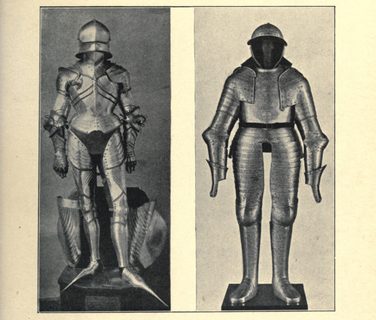
Plate armour in the late Middle Ages - 15th Century
Plate armour in the late Middle Ages - 15th Century
The body protection of heavy and semi-heavy cavalrymen in the 15th century was already completely dominated by plate armour. Shortly after 1400 the limbs of the heavy cavalrymen, as before in the late 14th century, were protected by plate armour, which of course included gauntlets and helmets. The protection of the torso in the latests versions of so-called transitional armour was mainly provided by coat of plates, made up of smaller plate segments, riveted at leather and often covered with fabric. However, already in the last quarter of the 14th century the first cuirasses in the form of a breastplate began to appear, and shortly afterwards the first complete cuirasses followed. As the 15th century progressed, parts of plate armour were increasingly worn by infantrymen, who, in addition to the helmet, increasingly wore a cuirass or at least a breastplate, or partial arm-guards like rerebraces, couters, vambraces and gauntlets.
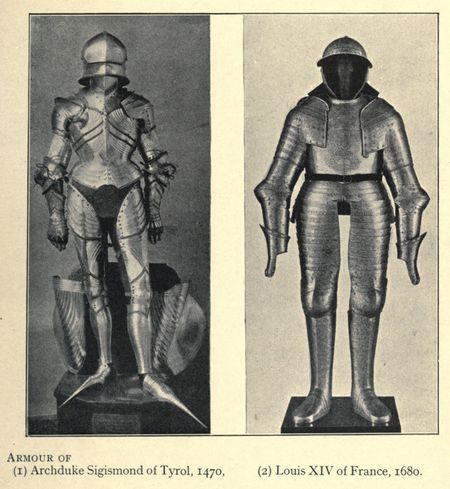
Armour of Archduke Sigismund of Tyrol, FFOULKES, Charles: Armour & Weapons. Clarendon Press, Oxford, 1909, s. 71.
The full plate armour of the late 14th century continued to serve well into the first quarter of the 15th century, however, when new elements began to appear. The hitherto widely worn helmet known as the basinet (or 'houndskull' - in the form of a typical snout-like visor) was supplemented and gradually replaced by the 'great basinet'. It was based on the previous model, but with a plate collar and a rounded visor. In the German cultural circle a special, usually box-like, type of cuirass called the 'kastenbrust' began to appear from the 1420s onwards and was quite fashionable until the middle of the century.
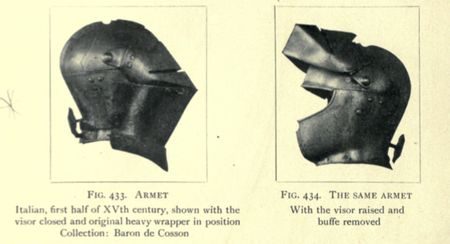
Armet, 15th Century. LAKING, Guy Francis: A record of European armour and arms through seven centuries. Vol. 2. London G. Bell and Sons, 1920, s. 82
During the 15th century (and especially from the middle of the 15th century) two most common fashionable (but of course also functional) styles of full plate armour prevailed – the so-called German style and Italian style. The style referred to as German was characterised by slender elegant lines, the edges of the plates running out into points or pointed decorative incised motifs, and the channelling (or ribbing) of some parts of the armour, which provided as a practical reinforcement as well as an aesthetic one. On the other hand the style known as Italian was characterised by the smooth rounded surfaces of the plates and the specific shape of the rather bulky pauldrons. From the 1420s onwards, heavy cavalryman´s enclosed helmet with a movable visor, known as an armet, was also developed in the Italian milieu.
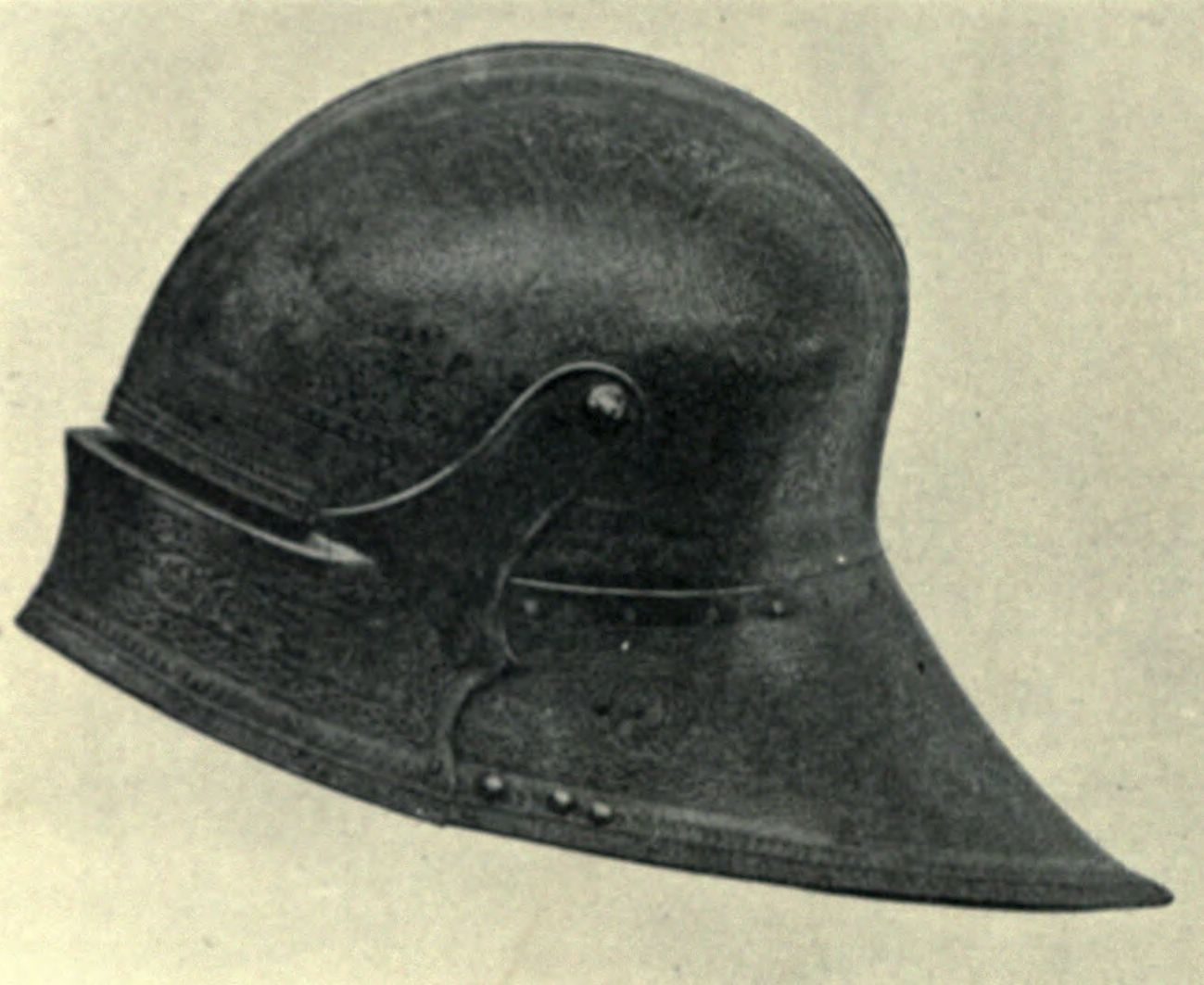
Sallet helmet - LAKING, Guy Francis: A record of European armour and arms through seven centuries. Vol. 2. / London G. Bell and Sons, 1920, s. 40.
In central Europe, around the 1420s-30s, a helmet that became almost iconic for the late Middle Ages appeared on the scene: sallet. This helmet, which evolved from a kettel hat with a folded brim and with visors in the front, became a common part of the late medieval full plate armour of heavy cavalrymen. However, this helmet was also favoured by infantrymen who often wore it like kettel hat pushed slightly to the back of the head. Due to this helmet the general term 'sallet armour' is nowadays derived and refers to the type of the plate armour from the second half of the 15th century made in the so-called German style with the protection of the head provided by a sallet with a bevor.
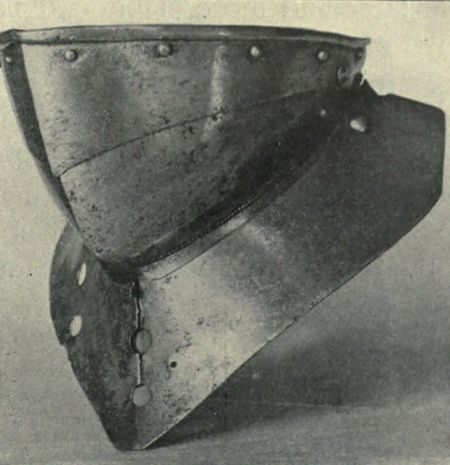
Bevor, 2nd half of 15th Century. LAKING, Guy Francis: A record of European armour and arms through seven centuries. Vol. 2. / London G. Bell and Sons, 1920, s. 47
And what to read next?
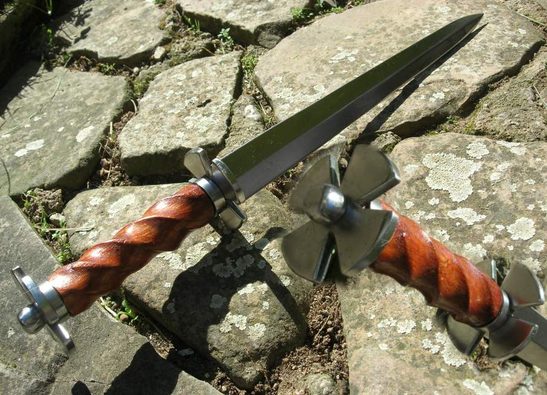
Rondel Dagger
When it comes to short sidearms of the late Middle Ages, it…
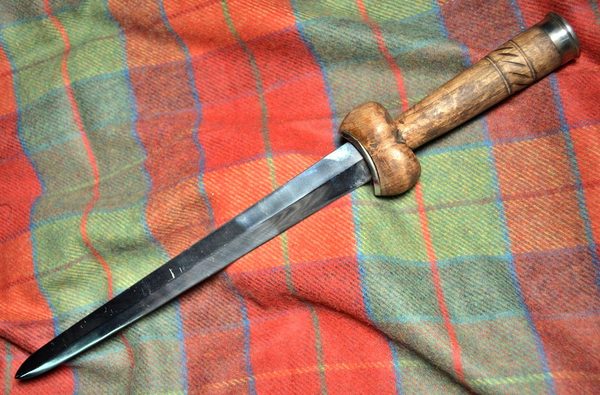
Kidney dagger – Bollock Dagger
The dagger was, alongside the knife, a basic and usually…

The Witcher
When Polish writer Andrzej Sapkowski finished the first…
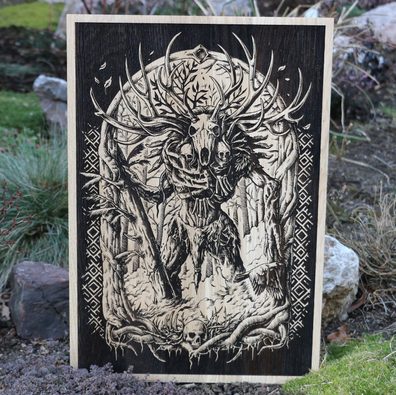
Leshy - Slavic forest spirit
Leshy - Slavic forest spirit


